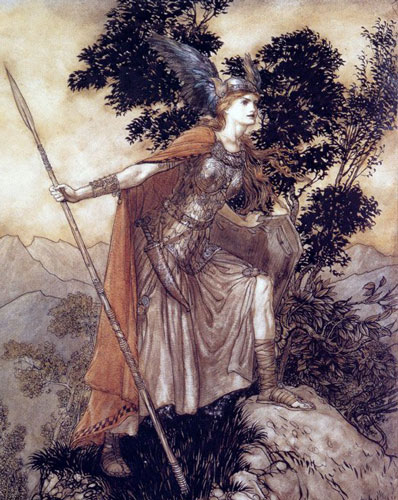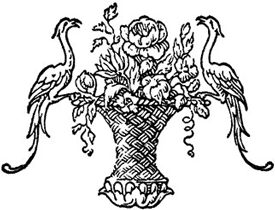E-text prepared by Juliet Sutherland, Linda Cantoni,
and the Project Gutenberg Online Distributed Proofreading Team ()
Transcriber's Notes:
Click on the [Listen] link to hear a midi file of the music. Lyricsappearing in the music image are set out below the image.
Obvious typographical and musical errors have been corrected.
The cover image was scanned from the 1914 edition published byDoubleday, Page & Company.
The original frontispiece is a poor-quality reproduction of a detailfrom Arthur Rackham's 1910 painting of Brünnhilde. A better-qualityreproduction has been used in in its place.


Brünnhilde the Valkyrie
Operas
EVERY CHILD SHOULD KNOW
DESCRIPTIONS OF THE TEXT AND MUSIC OF SOME OF THE
MOST FAMOUS MASTERPIECES
BY
DOLORES BACON

NEW YORK
GROSSET & DUNLAP
Publishers
ALL RIGHTS RESERVED
COPYRIGHT, 1911, BY DOUBLEDAY, PAGE & COMPANY
PRINTED IN THE UNITED STATES
AT
THE COUNTRY LIFE PRESS, GARDEN CITY, N.Y.
FOREWORD
In selecting a few of the operas every child should know, the editor'sgreatest difficulty is in determining what to leave out. The wish toinclude "L'Africaine," "Othello," "Lucia," "Don Pasquale," "Mignon,""Nozze di Figaro," "Don Giovanni," "Rienzi," "Tannhäuser," "Romeo andJuliet," "Parsifal," "Freischütz," and a hundred others makes oneimpatient of limitations.
The operas described here are not all great compositions: Some of themare hopelessly poor. Those of Balfe and Flotow are included becausethey were expressions of popular taste when our grandfathers enjoyedgoing to the opera.
The Nibelung Ring is used in preference to several other compositionsof Wagner because the four operas included in it are the fullest bothof musical and story wonders, and are at the same time the leastunderstood.
"Aïda" and "Carmen" belong here—as do many which are leftout—because of their beauty and musical splendour. Few, instead ofmany, operas have been written about in this book, because it seemedbetter to give a complete idea of several than a superficial sketch ofmany.
The beginnings of opera—music-drama—are unknown; but Sulpitius, anItalian, declared that opera was heard in Italy as early as 1490. TheGreeks, of course, accompanied their tragedies with music long beforethat time, but that would not imply "opera" as we-vi- understand it.However, modern opera is doubtles